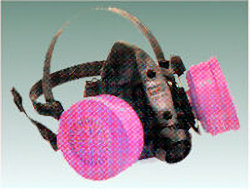Checklist for Respirator Selection
Use this checklist during your respiratory protection program audits and inspections:
General Requirements
- Respiratory hazards in your workplace have been identified and evaluated.
- Employee exposures that have not been, or cannot be, evaluated must be considered IDLH.
- Respirators are NIOSH-certified and used under the conditions of certification.
- Respirators are selected based on the workplace hazards evaluated and workplace and user factors affecting respirator performance and reliability.
- Respirators are selected based on the APFs and calculated MUCs.
- Provide a sufficient number of respirator sizes and models for proper selection.
IDLH Atmospheres
- Full facepiece pressure demand SARs with auxiliary SCBA unit or full facepiece pressure demand SCBAs, with a minimum service life of 30 minutes, are provided.
- Respirators used for escape only must be NIOSH-certified for the atmosphere in which they are used.
- Oxygen deficient atmospheres must be considered IDLH (d)(2)(B)(iii).
Non-IDLH Atmospheres

Air-purifying respirators used for protection against particulates are equipped with NIOSH-certified (High Efficiency
Particulate Air) HEPA filters.
- Respirators selected are appropriate for the APFs and MUCs.
- Respirators selected are appropriate for the chemical nature and physical form of the contaminant.
- Air-purifying respirators used for protection against gases and vapors are equipped with End-of-Service-Life Indicators (ESLIs) or a change schedule has been implemented. The ESLI is a system that warns the user of the approach of the end of adequate respiratory protection; e.g., the sorbent is approaching saturation or is no longer effective. (See image to right.)
- Air-purifying respirators used for protection against particulates are equipped with NIOSH-certified (High Efficiency Particulate Air) HEPA filters that are at least 99.97% efficient in removing particles of 0.3 micrometers in diameter. Equivalent filters (N100, R100, and P100) certified by NIOSH for particulates under Title 42 CFR part 84 may also be used. (See image to right.)
Knowledge Check Choose the best answer for the question.
3-4. Air-purifying respirators used for protection against particulates should be _____.
You forgot to answer the question!
